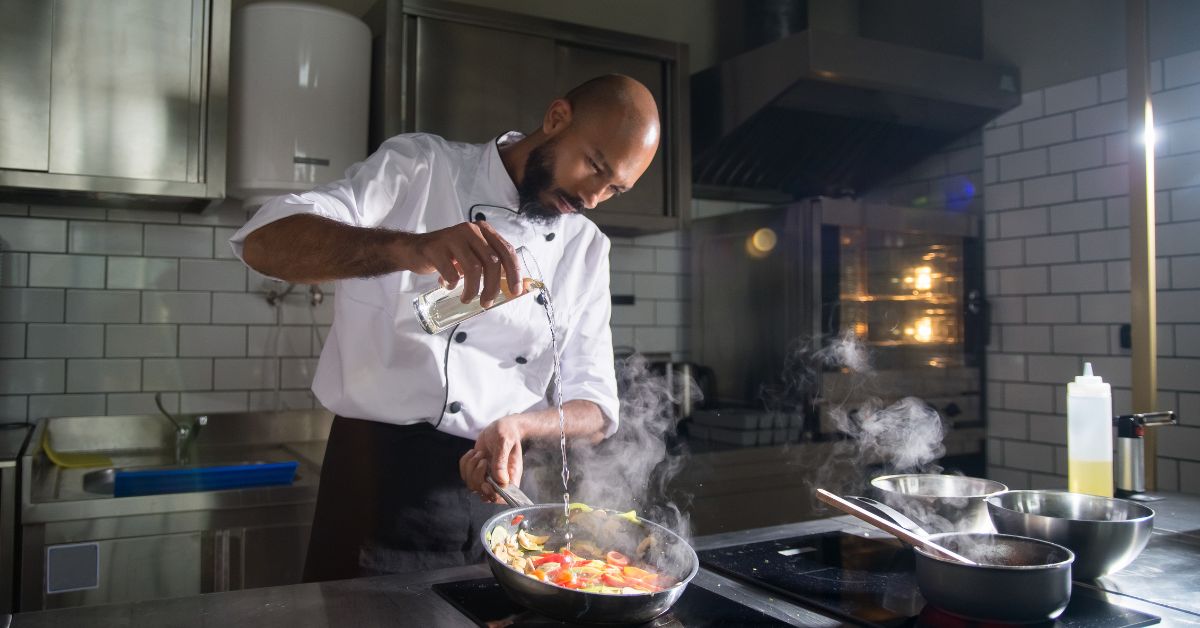What is culinary arts? Culinary arts is the craft and practice of preparing, cooking, and presenting food. It plays an important role in the food industry, fusing creativity with technical abilities to offer happy dining experiences.
In this article, you’ll learn about what is culinary arts are and its importance in shaping the food industry. Discover why culinary arts is an essential field for those passionate about food, creativity, and blending ingredients into memorable meals.
Table of Contents:
- Defining Culinary Arts
- Key Components of Culinary Arts
- The Role of Culinary Arts in the Food Industry
- Education and Training in Culinary Arts
- Trends and Innovation in Culinary Arts
- Conclusion
Defining Culinary Arts
Culinary arts definition refers to the process of cooking and showcasing food in a manner that is visually appealing and full of taste. It includes various techniques and skills, including preparation of food, cooking techniques, dish presentation, and planning menu. Culinary arts also include a comprehensive learning of ingredients, nutrition, and the cultural importance of food, turning it into a comprehensive field that fuses technical expertise and innovation.
Key Components of Culinary Arts
Culinary arts include several elements that altogether create a dining experience that is remembered. From becoming an expert in cooking techniques to learning the intricacies of presentation and understanding the ingredients, chefs must be skilled in various fields to be successful in this field. Here are some key aspects that are crucial to culinary arts:
- Cooking Techniques: Culinary arts offer a diverse range of cooking skills, including steaming, boiling, braising, and pan-frying, each a part of different types of platter and ingredients. Becoming an expert in these techniques is important for a cook to make different and best quality food, enabling them to enhance the flavors and textures of their dishes to the fullest.
- Presentation and Plating: In culinary arts, food styling and layout play a vital role in the overall dining experience. A well-set dish is a treat to the eyes and also improves the taste and quality of the food. Chefs meticulously consider the texture, color, and setting to make visually appealing dishes that tempt diners before they even start eating.
- Ingredient Knowledge: A thorough understanding of food elements is a basic aspect of culinary arts. Understanding how various ingredients interact, their taste, and their quantity to use helps chefs to create balanced and innovative dishes. This expertise guides in choosing the correct ingredients for recipes, making new combinations as an experiment, and changing dishes to suit dietary requirements or preferences.
The Role of Culinary Arts in the Food Industry
Culinary arts play an important role in the food sector by fusing innovation with technical skills to create out-of-the-world dishes and meal experiences. This field covers a diverse range of career prospects, every prospect offering different opportunities and expertise.
Professional Opportunities
Here are some career prospects within the culinary industry:
- Chef
- Pastry Chef
- Food Stylist
- Culinary Instructor
- Restaurant Manager
Chef: A chef supervises all kitchen operations, involving staff management, planning of menu, and assurance of food quality and consistency. They are in charge of the culinary direction of the restaurant and establishment, usually, mixing the menu with their own signature style and creativity.
Pastry Chef: A chef crafts pastries, cakes, and confections with a focus on desserts and baked items. Their role includes not just baking but also expertly decorating and displaying sweets. Pastry chefs are usually employed at bakeries, luxurious dining establishments, or patisseries.
Food Stylist: A food stylist concentrates on designing and laying out food to look its best for media, promotions, and photography. These responsibilities require close attention to design and knowledge of how different cuisines and ingredients interact. Food stylists work on making visually appealing work of cookbooks, marketing, and menus.
Culinary Instructor: A culinary educator or instructor teaches cooking techniques, culinary concepts, and management of the kitchen in schools, universities, or culinary institutes. They offer practical training and experience to motivated chefs, assisting them build skills and understanding of the culinary arts.
Restaurant Manager: A restaurant manager supervises the day-to-day operations of a restaurant, managing staff, overseeing customer service, and making certain smooth and efficient operations. They play a vital role in keeping up the quality of dining experiences and managing administrative responsibilities including inventory control and budgeting.
Education and Training in Culinary Arts
Let’s understand why education and skill development is important:
Educational
Education in culinary arts offers a planned pathway for motivated chefs and food professionals. Educational pathways consist of specialized culinary institutes and courses, where learners can get a diploma, certificate, or degree. These colleges provide several courses ranging from fundamentals of cooking techniques to mastery-level culinary management. Also, some courses offer specializations in fields like international cuisine, pastry arts, or hotel management.
Skill Development
Skills Development is an important factor in culinary education. With the help of practical training and classroom teachings, students build important skill sets like handling knives, profiling flavor, cooking techniques, and food safety. They also understand how to work effectively in a busy kitchen environment, getting good at managing their time, teamwork, and problem-solving. Additionally, culinary training often consists of learning about nutrition, menu planning, and food presentation, getting graduates ready to succeed in dynamic roles within the food and hospitality industry.
Trends and Innovation in Culinary Arts
Let us look at some current trends and the future directions of culinary arts:
Current Trends
The culinary arts sector is rapidly evolving, motivated by current trends that show changing consumer choices and developments in food technology. Modern culinary trends consist of plant-based and environmentally friendly cuisines, where cooks focus on using organic, locally grown ingredients to create nutrient-dense dishes. There is also growth focusing on global flavors, with a blend of skills and ingredients from various culinary traditions. Moreover, new cooking techniques, like sous vide and molecular gastronomy, are rapidly gaining popularity, giving chefs new methods to improve flavors and textures.
Future Directions
The future of culinary arts looks good, as it can be shaped by technological improvements and a comprehensive emphasis on health and sustainability. Upcoming practices can include the growing use of AI for the planning of the menu and recipe development, also the fusing of augmented reality in meal experiences to make immersive culinary journeys. As chefs personalize their menus to suit each dinner’s unique dietary needs and tastes, it is expected that the trend toward allergen-free cuisine and personalized nutrition will continue. Culinary arts will keep pushing the limits of creativity and innovation as the field adapts to these changes.
Conclusion
To conclude, understanding what culinary arts is involves recognizing it as a dynamic field that merges creativity with technical skills to craft extraordinary dining experiences. It encompasses everything from mastering cooking techniques to presenting dishes with visual appeal, reflecting the true essence of art and culinary. A culinary degree equips aspiring chefs with essential skills and knowledge, from ingredient selection to menu planning, which is crucial for a successful career in the food industry. As trends evolve and innovation continues to shape the field, those passionate about food and creativity will find endless opportunities for growth and exploration in culinary arts. Whether you’re aiming to become a chef, pastry chef, or food stylist, culinary arts offer a fulfilling career path.
(Visited 986 times, 1 visits today)
Popular Search
Top 10 DJ India
Makeup Steps
Advantages of Makeup
Interior Designer Salary
Makeup Artist Course
Benefits Of Photography
Hospital Waste Management
Types of Fashion Designing
Types of Lenses in Photography
How to Become a Radio Jockey
Best Nutrition Courses in India
Importance of Media Management
How To Become a Dietitian in India
Importance of Nutrition in Health
Interior Design History and Origins
Top 10 Famous Interior Designers
Top 10 Music Labels in India
Top 10 Best Animation Studios in India
Top 10 Nutraceutical Companies in India
Top 10 Fashion Designers in the World
How To Write a TV Commercial Script
Top 10 Career Opportunities in Fashion Designing
Advantages and Disadvantages of Animation
























